
Trajectory: energy evolution
Trajectory: energy evolution
Rising demand necessitates fossil fuels despite renewable expansion. Renewables surge, but only meet incremental demand.
Outlook
Outlook
Emissions peak around 2028 and by 2060 will fall by 50% from 2025 levels. This scenario corresponds to a 2.6 °C global warming pathway.
Key features of our base case scenario
Energy demand keeps rising
Population growth, increasing incomes and industrialisation drive consumption. Electricity market expands a fifth by 2030 and doubles by 2050.
Renewables are growing, but not replacing
Clean energy addresses supply rather than phasing out fossil fuels. EVs and hydrogen sustain long-term demand
Oil demand only levels off in the 2030s
Coal stays entrenched in developing markets. Natural gas continues to grow in Asia and the Middle East.
Policy lacks push
Governments are encouraging clean energy, but not forcing a full fossil fuel phase-down.
Integration and infrastructure aren’t keeping pace
Grid bottlenecks and high capital costs slow the transition in emerging economies.
Investment
Achieving our base case scenario requires cumulative capex spend of US$137 trillion to 2060.
Emissions
The outlook has deteriorated since our last report, with emissions now set to peak a year later in 2028. Rate of decline is also slowing to 2% annually, reaching 21.2 GtCO2e by 2060. China was responsible for a third of global emissions in 2024. It’s now set to drive the next three decades of emissions reductions.
Emerging economies of Asia and Africa face the challenge of balancing economic growth with emissions targets. Europe and the US also struggle to cut emissions as progress is slowed by protectionism and policy uncertainty.
See the bigger picture
Our energy transition outlook executive summary includes more analysis of these themes and the evolution of the energy and natural resources landscape across all four energy transition scenarios.
Fill in the form at the top of the page to get your complimentary copy.
Country pledges
Our view of how countries' existing long term emissions targets are achieved, roughly in line with a 2˚C warming trajectory.
Learn moreNet zero
A 1.5 °C by 2100 pathway, dependent on extraordinary levels of policy ambition, capital mobilisation and technological deployment.
Learn moreDelayed transition
A five-year delay in decarbonisation efforts due to geopolitical volatility and policy direction, with a 3.1 °C pathway.
Learn more







